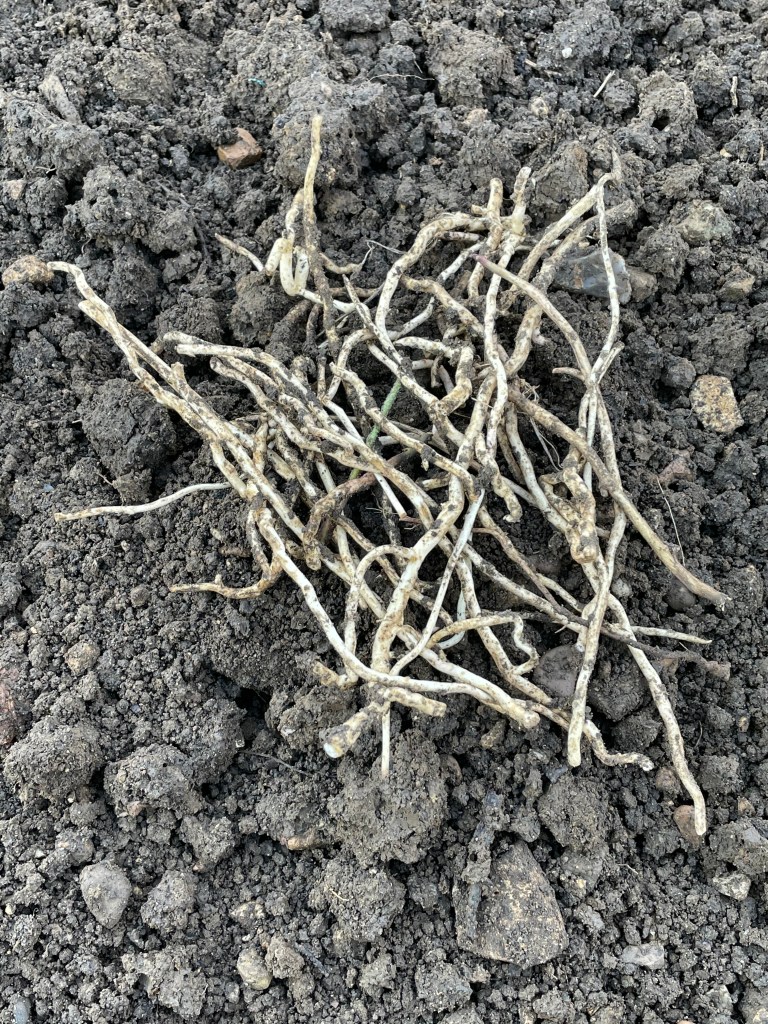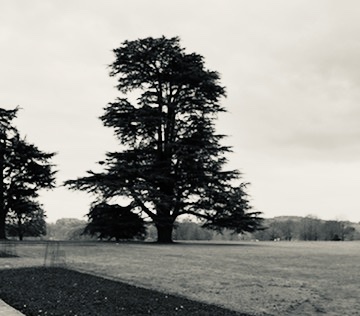
Yesterday, Saturday 13 August, I took my first ‘Cantaloupe de Charantais’ in for chef Marco. Looking back through my diary I see that I sowed them on 28 March and built their frames, transplanting the seedlings to their 50l pots in May. March 28th to 13 August; just shy of five months from seed to first fruits. Whenever I’ve talked melons with Marco, his question has been the same, ‘English melons – will they be sweet?’. I’ve replied with my finest gallic shrug and expressed my hope. ‘Will they be sweet?’ is a different way of asking, ‘Will summer be hot?’. It is not a question I can answer until September and then in the past not future tense. Last year, 2021, had a cold and miserable August even by British standards. My tomatoes were the worst in my twenty-year career; those that survived the blight had little flavour. My cantaloupes soldiered on. As young plants they are cold sensitive, but once established they seem quite resilient. The melons ripened eventually in September and October but they moved very quickly from ripe to over-ripe with that slightly unpleasant petro-chemical aftertaste. This summer has been hotter – at times problematically so. On Friday, I needed to spend the day in the glasshouse sowing the seeds of the bitter leaves – the endives, radicchios, chicories so beloved of chef. Increasingly beloved of me too as not even the pigeons seem to eat them. Voles do love ‘Grumulo’ though. In full, Cicoria ‘Verde de Grumulo’. I planted some seedlings out and the little furries ate every last one of them, and all my dill. I digress. Even with the shades fully down and the doors open at each end, the glasshouse was a constant 45Celsius all day. Outside it was 32C.
When I watered first thing on Friday, I had noticed that one of the melons had dropped from the plant and was held suspended by the net I had placed around it, lashed to the cane above along which I had trained the plant. In every other year I have grown my melons on the ground which is undoubtedly easier. But, having a spare bench with some height above it, I thought the theatre of a climbing frame with melons hanging in the air would be worth the effort. So it has proved. I was disappointed by the loss of this first fruit as the point of the net is to stop such drop, or so I thought. The outside temperature had been over 30C all week though, so I wrote it off as prolonged heat-stress. Cantaloupes are supposed to have shade in temperatures over 26Celsius. This cannot be for the plant itself as the maximum recorded in the glasshouse, before the shades were fitted, has been 55C. Cantaloupes are also known as Persian melons, although a friend has just told me that they originated in Armenia. In that part of the world, 26C is a spring and autumn temperature. My conclusion has been that the shade inhibits the fruit dropping, splitting or even cooking. The dark shading at 5 o’clock on the one pictured is not bruising, but it may be the shoulder which faced the sun. I resigned myself to cutting up this first failure and feeding it to the hens. There are twenty more melons on the three plants. There is hope.
When I returned in mid-afternoon for the second watering, I was brought up short by the scent of ripe melon – the unmistakable musk of the cantaloupe – musk melon is another of its synonyms. Muscat melon? There had been no hint of it at 7am. I took a knife and halved it, smelled deeply, then cut a slice to taste. Without question, the finest melon I have eaten in England.
I walked it down to the House and presented it to my sceptical Italian. Marco didn’t even need to taste it, the smell was enough. He declared it ‘buonissimo’, very good and, ‘the perfect size’. I love melons but they are so often overwhelming. This one fitted perfectly in the palm and was indeed the perfect size to feed two people.
Cantaloupes are not the only fruit. I have water melons too. A small variety called ‘Mini Blue’, an F1 hybrid. The plant was supposed to be compact and to require just one square metre of space, but that was a myth. The fruits should be in the range of 0.9-1.4kg and as a litre of water has a mass of a kilogram and melons – water, cantaloupe or other are almost entirely water, I can judge how close to maturity they are both visually and by hefting them. The largest two have reached the bottom of the range. If we have have three more hot weeks these water melons will be on the table.
I garden in the Cotswolds. There could be a frost within the next three weeks.
A kind friend has enlightened me on how a melon was named ‘Howling Wolf’. It has very little poetry to it. Cantaloupes were first grown in western Europe at a papal property in Lazio called Cantalupo, presumably because wolves were abundant in the area and wolves do like to sing.







